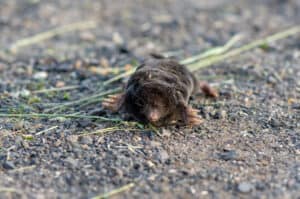Hundreds of thousands of animal species have been identified as existing in the world. Some of these species are considerably more fascinating than others, while others have many traits in common. The mole is one such animal that closely resembles another. At first glance, a mole might be mistaken for a rat or another type of mouse. However, a mole’s massive hands are one of the quickest methods to spot one.
Although relatively small, these animals eat in large quantities. Because of how small they are, it is a wonder how they can keep all this food down and, more interestingly, how they go about their “business.” This article would shed more light on everything you might have wondered about mole poop, what it looks like, its dangers, and other interesting facts.
Background on Moles
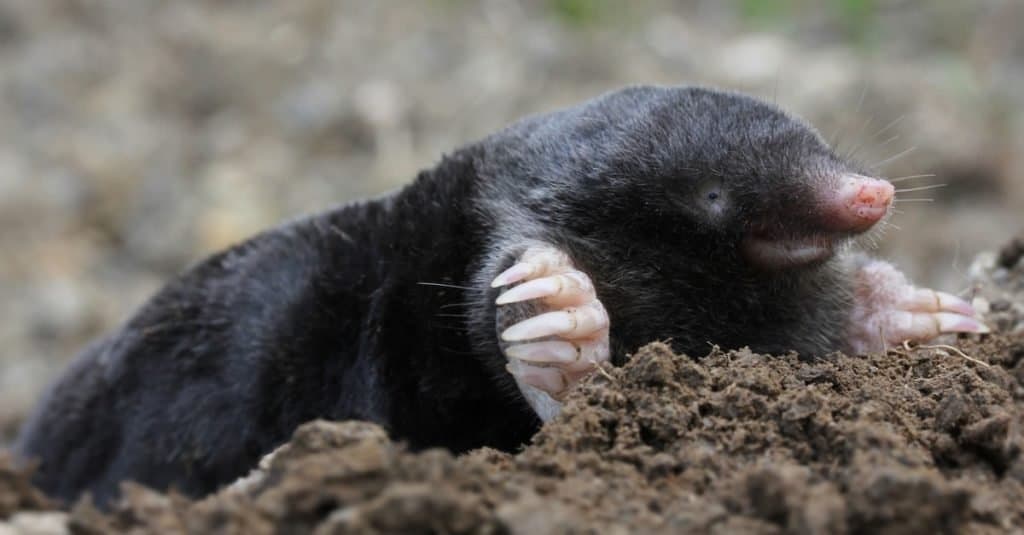
Moles paralyze worms and insects with poison in their saliva.
©Carmen Rieb/Shutterstock.com
Moles refer to any species in the family Talpidae. The earliest record of this species dates as far back as the Eocene Epoch, some 34 to 55 million years ago. There is enough evidence, verified by experts, proving that the species has evolved since then, spreading from Europe to other parts of the world, except Antarctica. Currently, there are about 42 mole species identified worldwide. These 42 species split into ten separate genera according to the scientific distinction between a family and a species. Altogether, all mole species are called true moles and belong to the order Eulipotyphla, which also includes hedgehogs.
How To Identify Moles
Moles are small mammals known for their love for burrowing, inhabiting places where they can dig their infamous intricate tunnels. These animals usually have long snouts and small, short bodies. Although it is easy to mistake moles for rodents because of how they look, they are not a part of the rodent family. Unlike most rodents, moles have 44 teeth and spend most of their time underground. Their small, fur-covered eyes and pointed, hairless snouts make them instantly recognizable. Also, moles do not have external ears. Instead, they have ear canals that cannot be seen at first glance because they are covered by fur.
Moles prefer moist, loamy soil and enjoy digging their holes very early in the morning or evening. It is also very easy to spot them outside after the rain. Although moles spend most of their time underground, they occasionally take a break from digging and emerge from their holes. Most of their surface activity happens in the spring or fall.
What Does Mole Poop Look Like?
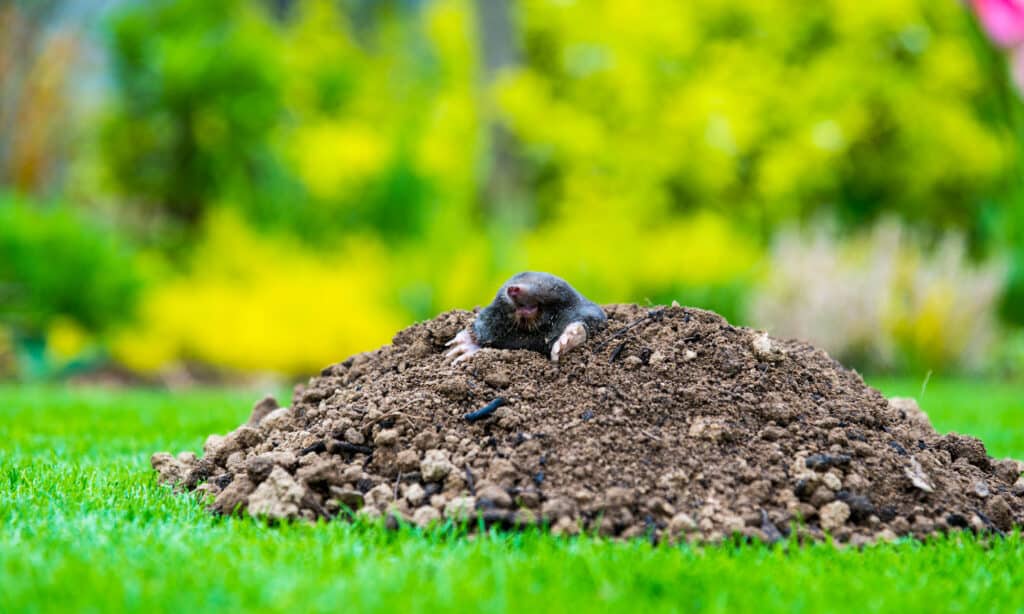
Mole droppings resemble pellets and are often brown.
©kubais/Shutterstock.com
As mentioned, moles enjoy spending their time digging holes. The presence of holes on your property is one of the simplest indicators that you may have a mole issue. If you do not locate any holes, checking for mole droppings is another surefire technique to determine whether or not they have visited your property.
Their droppings resemble pellets and are often brown and relatively small, just like moles themselves. Usually, you can find their droppings in heaps close to the surface of the dug holes or around trails of dried-out grass they made.
Is Mole Poop Dangerous?
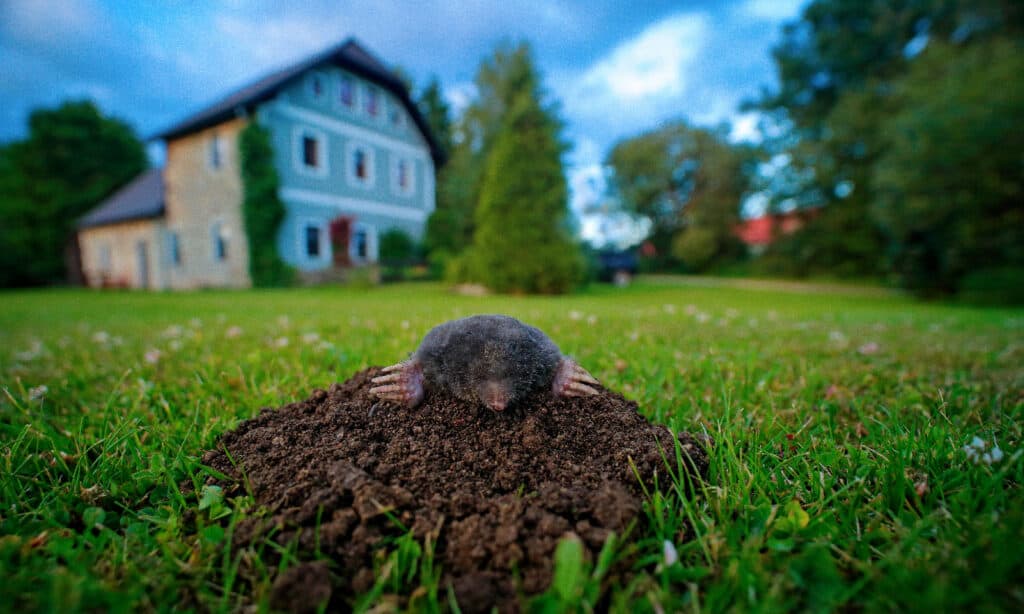
Moles sometimes have ticks that carry Lyme disease.
©Ondrej Prosicky/Shutterstock.com
Overall, mole poop is not dangerous to humans. Essentially, no form of disease or infection can be gotten from directly handling mole poop. However, it is advisable to proceed with caution. The reason for this is that moles can sometimes have ticks that carry Lyme disease, and these ticks are sometimes present in the poop or surrounding areas.
Even though there are no known bacteria in mole poop that can harm humans, it is still not advisable to handle mole poop directly with bare hands. Finding mole poop on your property more than once is an indicator that you might be facing an infestation, which increases the chances of there being Lyme-carrying ticks around. The good thing is that moles do not move around in groups so even if there is a mole in your yard, the chances of there being more than one are very low.
Is There A Difference Between Rat and Mole Poop?
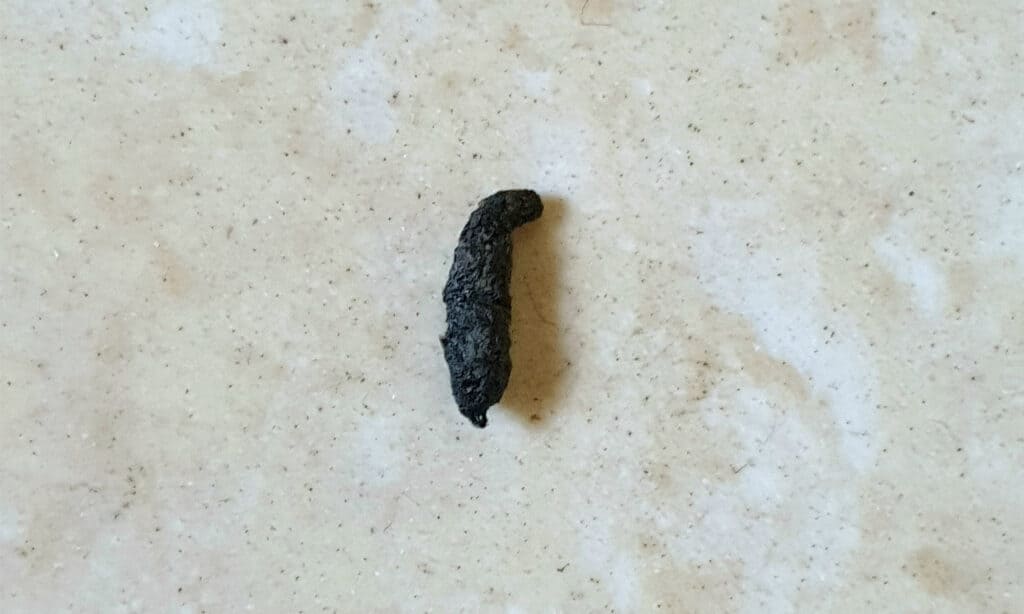
Rat poop is much darker than mole poop.
©iStock.com/AAhmad Khan
Although finding poop next to a freshly dug hole is a surefire indicator of the presence of a mole, there is also a chance that said poop belongs to a rat. Just like mole poop, rat poop is a small pellet. One of the main ways to tell them apart is that rat poop is cylindrical and has a darker color than mole poop. Also, rat poop is shinier and is shaped like olives or small raisins.
Old rat poop is grayer and dustier, easily falling apart, and unlike mole poop, they are dangerous to humans and even other animals, particularly dogs. Some of the diseases your dog can get from rat droppings include roundworm, rabbit fever, and toxoplasmosis. Rat droppings are also very harmful to pregnant women and their unborn babies.
Also, unlike mole poop, rat poop has a very distinct smell. Mole poop has no particularly offensive smell, primarily because they are often found outdoors, and it is hard to pick out any offensive smell. This is not the same for rat poop. However, rat urine smells more offensive than rat poop. As such, whatever offensive odor you perceive might be from the rat urine.
What Do Moles Eat?
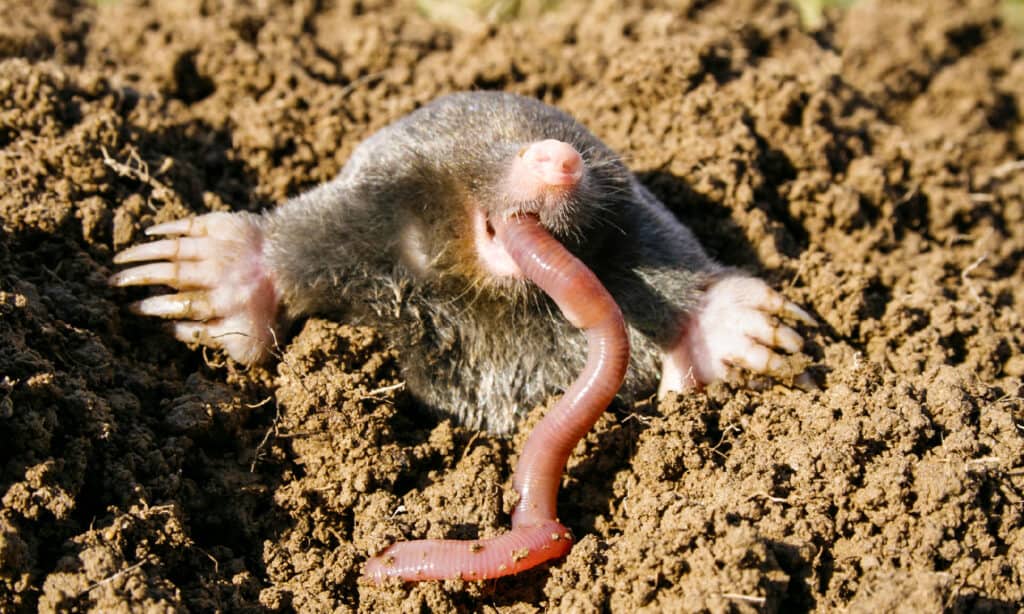
As carnivores, moles particularly feed on earthworms.
©iStock.com/Tramper2
Aside from their appearance, another primary difference between moles and rodents is their choice of food. Most rodents are herbivorous, and contrary to popular belief, moles are certainly not. Moles do not eat plants. These animals are strictly carnivorous and feed on several other small animals in large amounts.
Moles primarily enjoy feasting on small invertebrates and insects, particularly earthworms. A mole can eat up to over 100% of its body weight in insects within a day and can eat tens or hundreds of thousands of worms throughout its life, eating a little over 200 worms daily. These expert diggers eat so much because they use up most of their energy digging holes throughout the day. Other components of their diet include snails, slugs, ants, beetles, spiders, centipedes, and millipedes. It is also worth noting that moles do not hibernate during the winter, and as such, they hunt for food all year round.
Up Next:
The photo featured at the top of this post is © Liz Weber/Shutterstock.com
Sources
- Critter Control, Available here: https://www.crittercontrol.com/wildlife/moles/mole-droppings
- Almanac, Available here: https://www.almanac.com/pest/moles
- Wildlife Removal Pros, Available here: https://kywildliferemovalpros.com/species/moles/nuisance-mole-droppings/
Thank you for reading! Have some feedback for us? Contact the AZ Animals editorial team.





